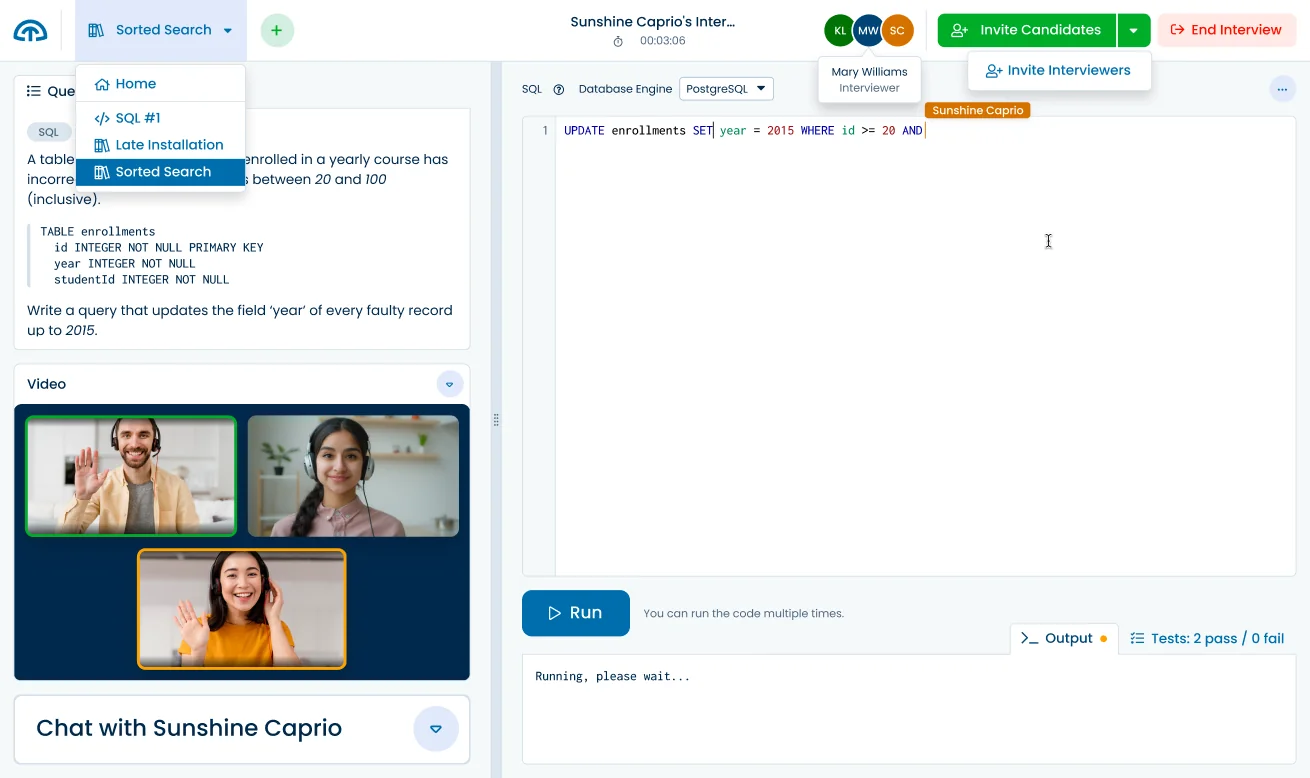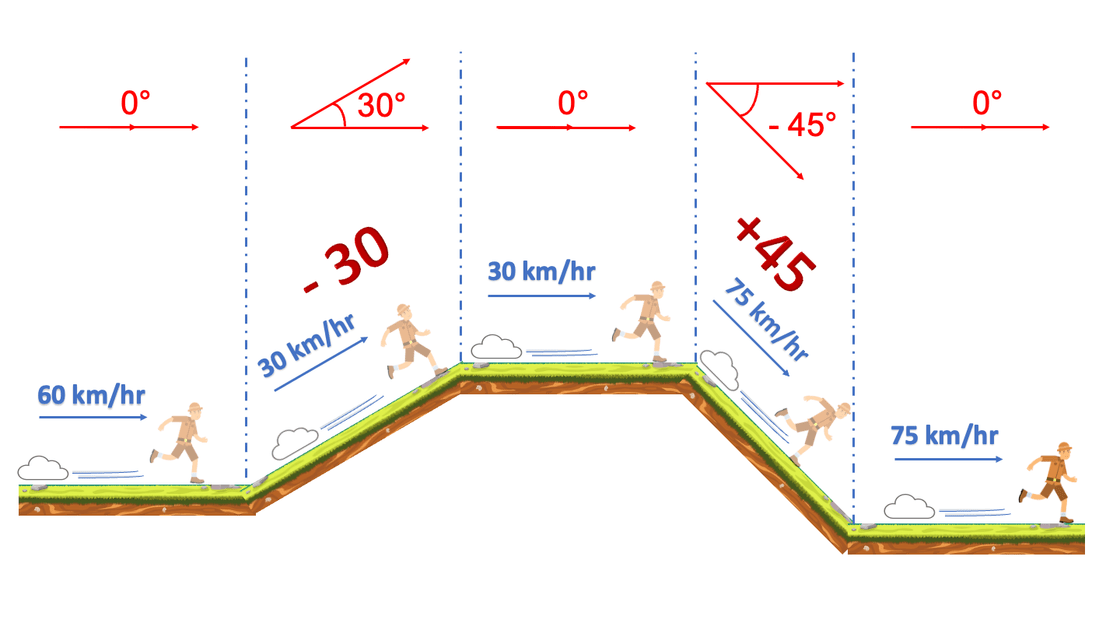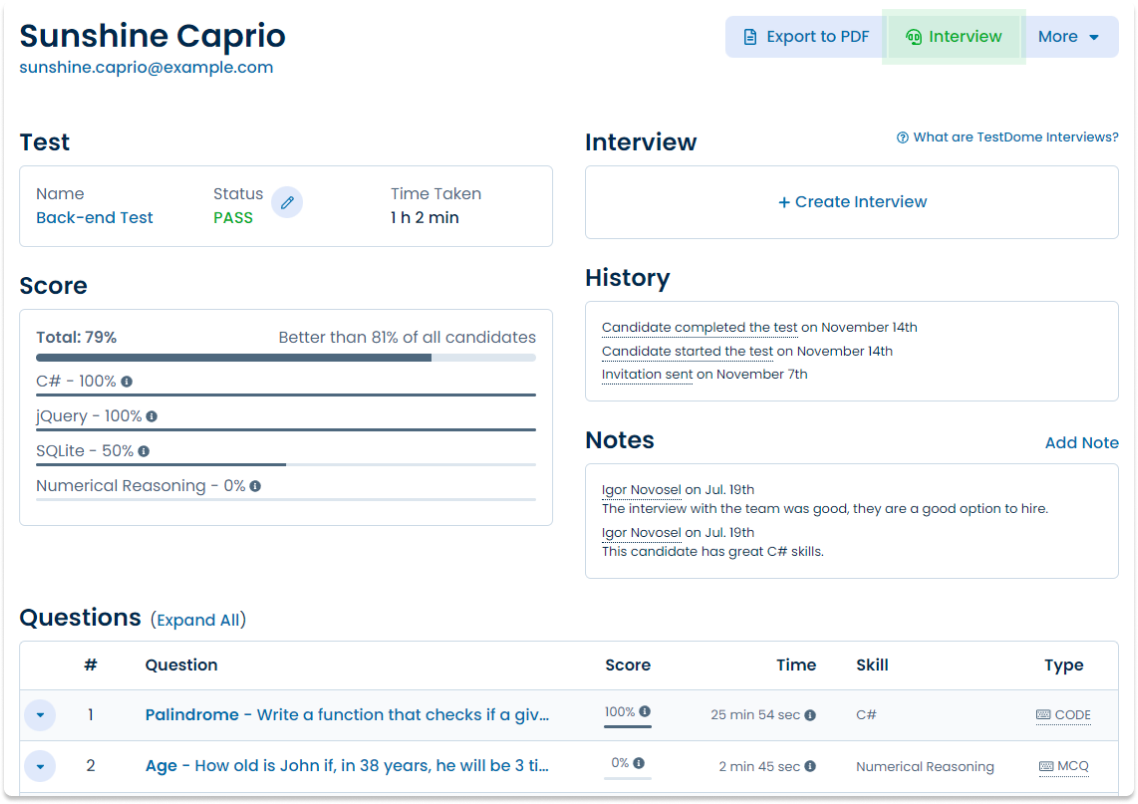PHP Online Test
For jobseekers
Practice your skills and earn a certificate of achievement when you score in the top 25%.
Take a Practice TestFor companies
Screen real PHP skills, flag human or AI assistance, and interview the right people.
About the test
The PHP online test assesses knowledge of programming in the PHP language through a series of live coding questions.
The assessment includes work-sample tasks such as:
- Serializing to/from JSON to handle web requests.
- Using OOP principles in PHP.
- Working with associative arrays and using common built-in functions.
A good PHP developer needs a solid understanding of the PHP programming language and its specifics, OOP principles, and the ability to take advantage of its rich set of built-in functions.
Sample public questions
Your company is analyzing malware that targets numerical record files stored in an array.
The malware adjusts values at both the edges of the array using a window of size 's' as shown in the video below:
Implement the simulate method so that the malware behavior is replicated for further study.
A megastore offers three types of discounts, which are represented as DiscountType enum.
Implement the getDiscountedPrice function which should take the total weight of the shopping cart, the total price, and the discount type. It should return the final discounted price based on the discount schemes as shown in the promotional video below:
(Open full-size video in a new tab)
For example, the following code:
echo getDiscountedPrice(12, 100, DiscountType::Weight);should print:
82For jobseekers: get certified
Earn a free certificate by achieving top 25% on the PHP test with public questions.
Take a Certification TestSample silver certificate
Sunshine Caprio
Java and SQL TestDomeCertificate
For companies: premium questions
Buy TestDome to access premium questions that can't be practiced.
Ready to interview?
Use these and other questions from our library with our
Code Interview Platform.

51 more premium PHP questions
Read First Line, Kilometer Converter, Flower Shop, Shipping Service, PC Parts Seller, Action Stack, Array Search, Hobbies, View Count, Log Parser, String Occurrence, Segment, Cookie, Read Write Execute, Fire Dragon, Unique Numbers, Chain Link, Language Teacher, Crop Ratio, Vectors, Numbers To Text, Array Sum, Paragraph, Filter, Greeter, Calories Burned, Students, Height, Username, Date Transform, Special Actions, Company Stock, Chemical Machine, Adventure Game, Candies, Digital Flasks, Automated Forklift, Flimsy Bridge, Construction Game, Parking Allocation, Planet Search, Ecological Experiment, Popular Book, Circuit Simulator, Airport Networks, Seasonal Tourism, Shipping, Last Key, Category Tree, Jobs Time, Christmas Lights.
Skills and topics tested
- PHP
- Exceptions
- Inheritance
- Method Overriding
- OOP
- Null Coalescing Operator
- Callback
- Classes
- Properties
- Stack
- Arrays
- Recursion
- Associative Arrays
- Iteration
- JSON
- Serialization
- XML
- Stream
- Strings
- Arithmetic
- Session
- Interfaces
- Algorithmic Thinking
- Linked List
- Bug Fixing
- Integer Division
- Language
- Pass by Reference
- Regex
- Sorting
- AI Code Review
- Conditional Statements
- Loops
- Conditions
- 2D Array
- Video
- Graphs
- Video
For job roles
- PHP Developer
- Web Developer
Sample candidate report
Need it fast? AI-crafted tests for your job role
TestDome generates custom tests tailored to the specific skills you need for your job role.
Sign up now to try it out and see how AI can streamline your hiring process!
What others say
Simple, straight-forward technical testing
TestDome is simple, provides a reasonable (though not extensive) battery of tests to choose from, and doesn't take the candidate an inordinate amount of time. It also simulates working pressure with the time limits.
Jan Opperman, Grindrod Bank
Product reviews
Used by
Solve all your skill testing needs
150+ Pre-made tests
130+ skills
AI-ready assessments
How TestDome works
Choose a pre-made test
or create a custom test
Invite candidates via
email, URL, or your ATS
Candidates take
a test remotely
Sort candidates and
get individual reports






